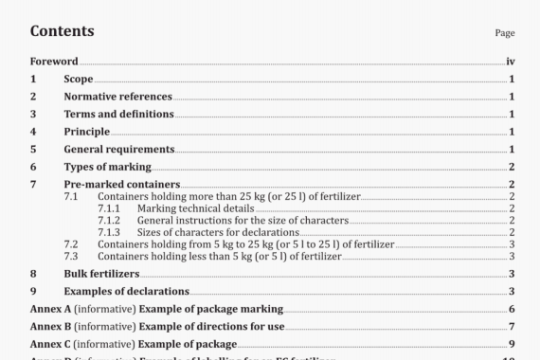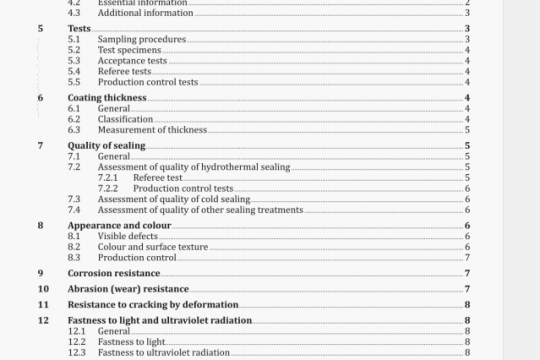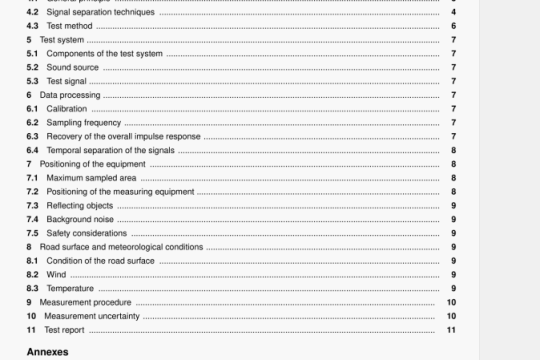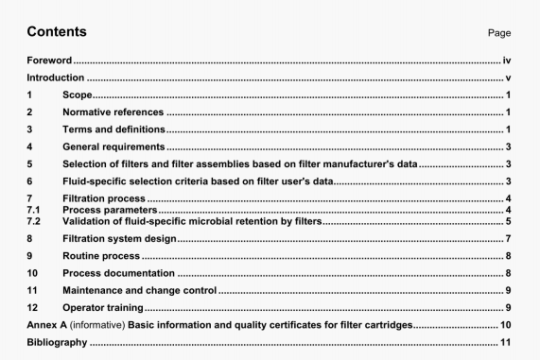ISO 14606:2000 pdf download
ISO 14606:2000 pdf download.Surface chemical analysis – Sputter depth profiling -Optimization using layered systems as reference materials.
NOTE Usually with ion sputtering, data may be collected in either an alternating mode or continuous mode. If the continuous mode is used, it is preferable to ensure that the ion-induced Auger electron si9nals are negligible. The problem of ion-induced Auger electrons seems only significant for Auger electron peaks below 100 eV
4.3 X-ray photoelectron spectroscopy
Important parameters for a depth profile measurement of a single layered or an multilayered system by XPS with ion sputtering are the following.
a) Probing parameters (important for analysis): Photon energy (X-ray source), X-ray source power (i.e. voltage and current), angle of incidence, analysis area (i.e. beam diameter or selected area).
b) Sputtering parameters (important for depth resolution): Ion species, ion energy, ion beam current, angle of incidence, sputtered or raster area. The sample stage can be in a stationary or rotational mode.
c) Measurement parameters (important for both analysis and depth resolution):
1) Kinetic energies of photoelectrons and/or the respective electron binding energies of both overlayer and substrate elements or both elements A and B.
2) Area of measurement for selected area XPS.
NOTE Usually, XPS signal intensities are measured as a function of sputtering time in an alternating mode with ion sputtering.
4.4 Secondary ion mass spectrometry
Important parameters for a depth profile measurement of a single layered or an multilayered system by SIMS are the following.
a) Probing and simultaneously sputtering parameters (important for both analysis and depth resolution): Primary ion species, ion impact energy, ion beam current, angle of incidence, analysis area (i.e. gated area), sputtered area. The sample stage can be a stationary or rotational mode.
NOTE 1 In some SIMS systems the beam energy is given for the source potential with respect to the ground but the sample potential is not at ground. The impact energy takes account of the sample potential.
NOTE 2 Some time of flight SIMS instruments use dual beams. In this case, all parameters for both beams may be noted.
b) Measurement parameters (important for both analysis and depth resolution):
1) Positive or negative secondary ion species (atomic or molecular) of both overlayer and substrate elements or both elements A and B.
2) Settings of gates (i.e. electronic, optical, etc.).
NOTE 3 Usually, secondary ion signal intensities are measured as a function of sputtering time in a continuous mode with primary ion sputtering. In some SIMS instruments an interrupted mode (primary ion gating) is used where different ion beams are used for sputtering and analysis.
5 Depth resolution at an ideally sharp interface in sputter depth profiles
5.1 Measurement of depth resolution
For the purposes of this International Standard, the measurement of the depth resolution LSz of sputter depth profiles of a single layered or an NB/NB
NOTE 1 The definition of depth resolution Lz in this clause applies only for optimization of setting parameters in depth profiling.
The definition and measurement procedures of depth resolution will be described in International Standards to be developed by ISO/TC 201/SC 1 and SC 4, respectively, in the future.
NOTE 2 For SIMS, where matrix effects are significantly different between the two layers, Zz may still be used for optimization but may not relate closely to the real depth resolution of the underlying chemical composition.
6.1.5.2 If an ion optical aperture is used in dynamic SIMS, the centre of the sputtered area shall be aligned with the analysis area as defined by the ion optical aperture [see Figure 2 d)], and this is carried out in a test area as near as possible to the analysis area. For some instruments with an optical aperture and a scanning ion image display, alignment may be carried out during the profile.
6.1.5.3 If different ion beams are used for sputtering and analysis, in a time-of-flight SIMS instrument, the centre of the sputtered area shall be aligned with the analysis area as defined by the focused ion beam [see Figure 2 a)].
6.1.5.4 If the post-profile realignment of each column of pixels is used to provide an image depth profile alignment shall not be necessary.




